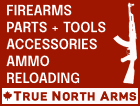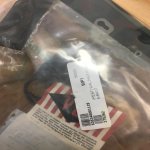WRONG!
https://www.thehighroad.org/index.php?threads/aluminum-frame-walther-p-38-p-1.159973/
(Quote)"Note the comment in one of the above posts that
the hex-bolt was not installed to prevent the frame from cracking but to reduce wear (read rounding or peening) at a key point. When you disassemble the P-1, you'll see that the hex bolt comes into play with the locking bolt when the slide is returned to battery by the recoil springs and not when the locking bolt strikes the frame from the more violent blow-back forces of the fired round.(end quote)
(Quote)"
The fact is, the steel reinforcement pin was NOT to prevent frame cracks, it was to give the locking block a steel "wear surface". Walther's that were heavily shot tended to wear the soft aluminum ramp in the frame that operates the locking block. When the ramp wore enough, the gun would start to have locking problems.The steel pin was installed to give the steel locking block a longer wearing steel surface. THAT'S why the pin is hexagonal in shape.
There are a number of reasons aluminum P-38/P1 pistols will crack frames or slides. Some of the most common:
1. Shooting hot ammo or heavy bullet loads.
These guns were designed for use with standard load 125 grain bullet ammo.
Shooting hot ammo or bullets over 125 grains can cause cracks.
2. Using "extra-power" recoil springs.
While extra-strong recoil springs may "pad" the frame from hot ammo, people fail to understand that the slide ALSO slams SHUT with greater force.
It's that extra-hard slide closing that literally hammers the frame forward and cracks it.
A look at the posted broken frame shows that the frame was hammered FORWARD not rearward".(end quote).
By the way, I've been shooting the Walther P1 for over 5 years so I know well how it works.

































































































